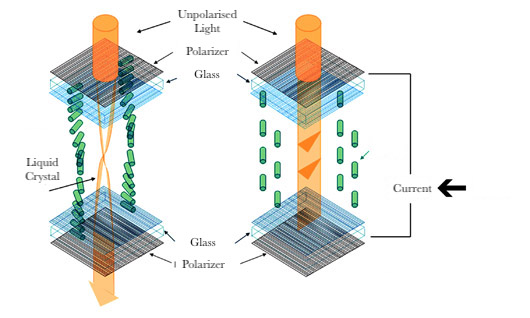
Passive LCD
Passive LCD (Liquid Crystal Display) screens are a very common type of display technology on the market, used in a wide range of electronic products, from watches to information displays in train stations or airports. Its operation is based on the use of liquid crystals to control the transmission of light and create images.
There are two main types of passive LCDs:
1 – Matrix LCD screens: These screens are made up of rows and columns of pixels, and use a multiplexing technique to display information on the screen. These displays are ideal for applications that require a detailed representation of information, such as digital clocks, thermometers, etc.
2 – Segmented LCD displays: These displays are made up of individual segments that light up to form digits and letters. They are ideal for applications where numerical information is required to be displayed, such as time displays at train stations or airports.

Both types of passive LCD displays offer excellent clarity and sharpness, as well as being very energy efficient. However, segmented LCD displays are less expensive and simpler in terms of design, making them ideal for applications that require a simple representation of information.
Passive LCD screens are an excellent choice for applications that require a clear and sharp display of information, with reduced cost and minimum energy usage.
Did you know it?
Liquid crystals were discovered in 1888 by the botanist Friedrich Reinitzer, when he was studying… carrots. In particular, cholesteryl benzoate.
Catalogue
– All our passive LCDs are customised models. Please get in touch to check your needs and offer a fitting design –
